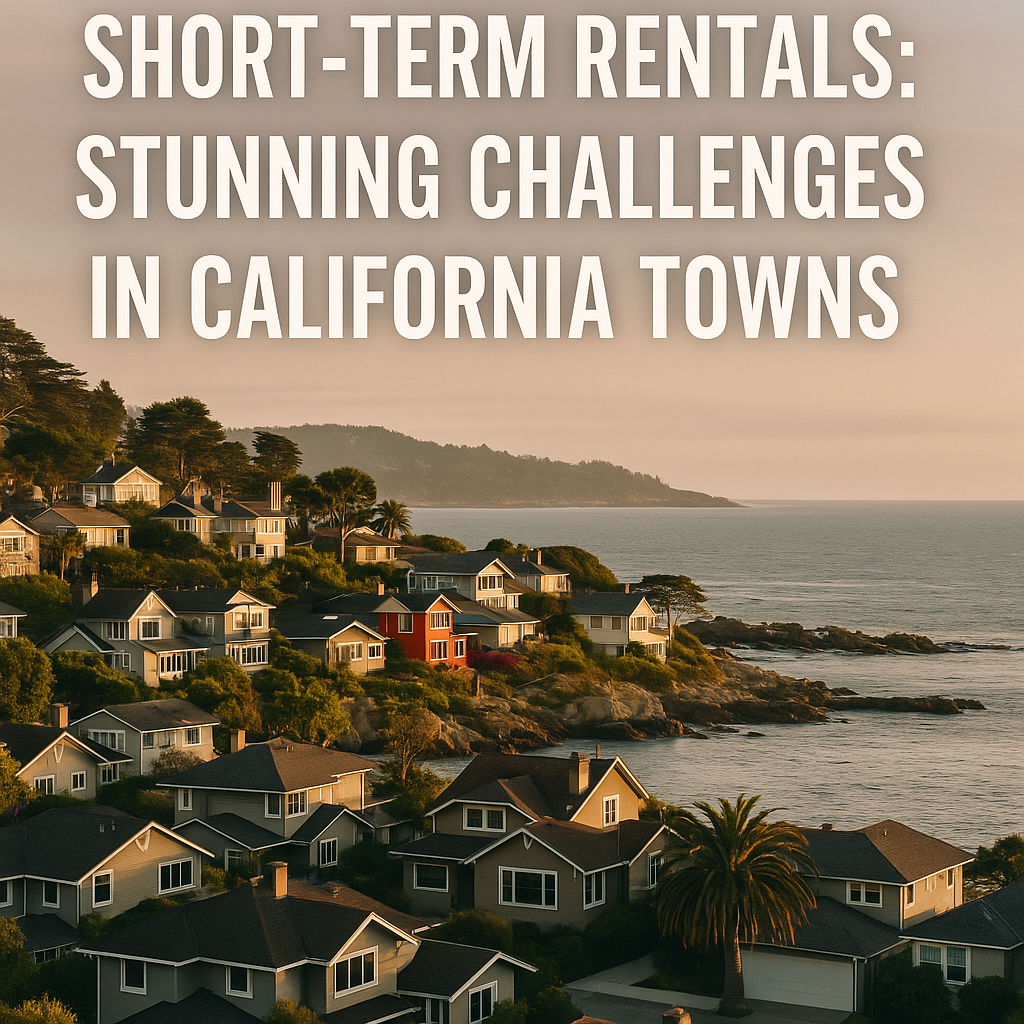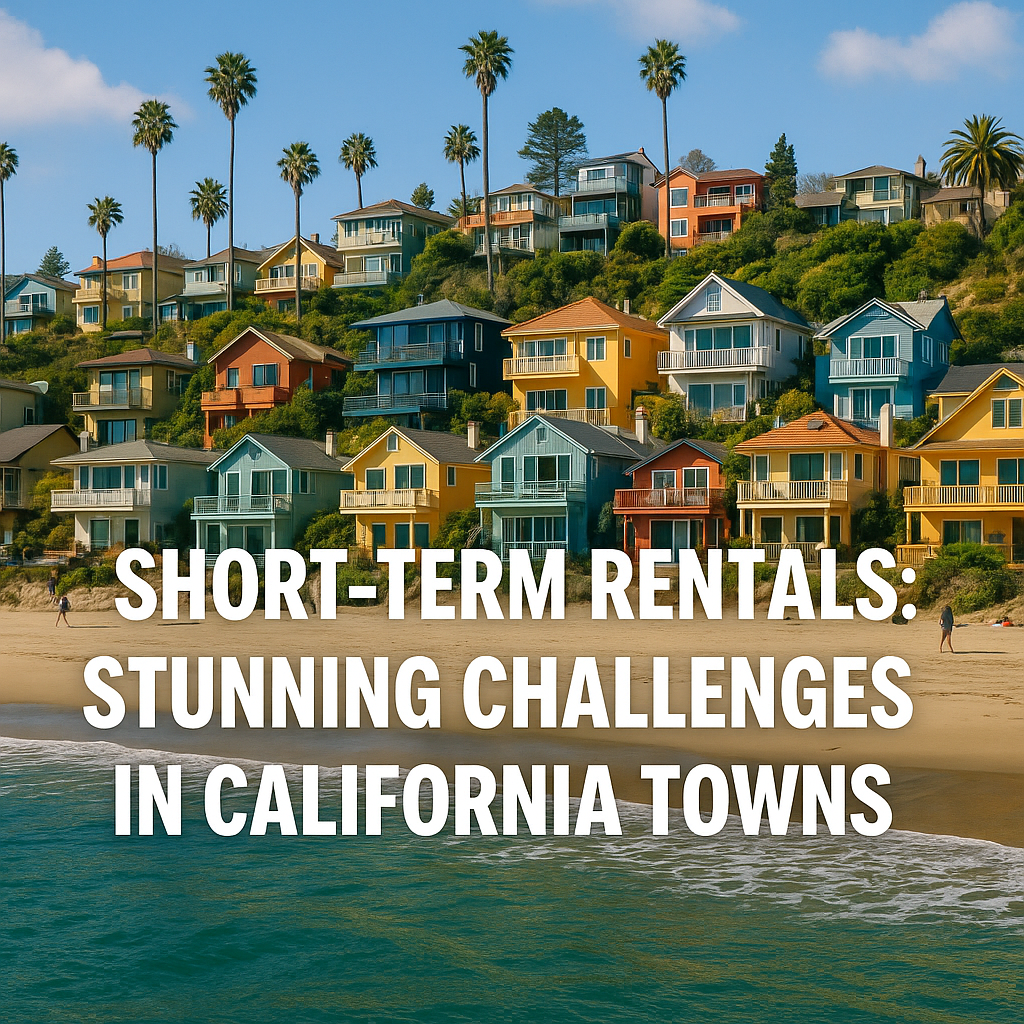Short-Term Rentals: Stunning Challenges in California Towns
Short-Term Rentals: Stunning Challenges in California Towns
Short-term rentals have emerged as a double-edged sword in California, presenting communities with unique challenges and opportunities. While these rentals offer a lucrative avenue for homeowners and a diverse experience for visitors, they have also sparked heated debates over regulation, housing availability, and community impact. In towns across the state, the situation is evolving, with various perspectives illuminating the complexities of this issue.
The Impact of Short-Term Rentals on Local Communities

Short-term rentals, particularly platforms like Airbnb, have transformed the landscape of many California towns. The picturesque settings of places like Three Rivers, close to national parks, have attracted a plethora of short-term rental options. According to an article from SFGate, many locals view these rentals as beneficial for boosting tourism and driving revenue. In 2022 alone, short-term rentals generated substantial income for local homeowners, providing financial relief to many who might be struggling in an increasingly costly housing market.
However, this influx of tourists can strain local resources. The same report highlights concerns raised by residents who believe that short-term rentals contribute to the degradation of community character. Issues such as noise complaints, increased traffic, and the loss of long-term rental options for residents are prevalent. Locals fear that the charm of their towns is diluted by the transient nature of vacationers.
Balancing Regulation and Opportunity
As short-term rentals push the boundaries of local economies, towns grapple with how to strike a balance between reaping economic benefits and maintaining their unique identities. The challenges vary widely from place to place. For example, the nearby town of Paradise has tightened regulations, limiting the number of permits issued for short-term rentals. It reflects a growing sentiment that some towns should take stronger measures to control the proliferation of these rentals to protect housing availability for locals.
Regulatory frameworks differ significantly across California. Some areas, like Los Angeles and San Francisco, have implemented stringent measures, including limits on the number of days a property can be rented out, requiring registration, and imposing penalties for non-compliance. In contrast, other towns like Three Rivers maintain a more laissez-faire approach, encouraging the growth of short-term rentals as a way to attract tourism and support local economies.
Community Voices: Mixed Reactions
The discourse surrounding short-term rentals varies drastically between residents. On one side, advocates argue that they are a necessary economic boost, particularly in areas where traditional industries might be waning. They point to the financial benefits that homeowners experience and the opportunities for local businesses that attract tourist dollars. A local shop owner mentioned in an article from the Mercury News emphasized that vacationers contribute significantly to their bottom line, helping keep the community vibrant.
Conversely, opponents of unrestricted short-term rentals voice their concerns about rising housing costs and the potential hazards of neighborhood disruptions. A resident from Three Rivers expressed worries about housing shortages, emphasizing that new short-term rental listings should not come at the expense of local families who require stable, long-term rentals. The inconsistency in local regulations further fuels frustration, as some residents feel left in the dark about changing policies and potential impacts on their neighborhoods.
Finding Solutions Amidst Complexity
With mounting pressures from both sides, California towns are tasked with navigating a path that accommodates tourism without compromising the needs of local residents. Solutions might include advisory boards dedicated to short-term rental regulations, increased transparency in rental agreements, and community engagement initiatives to ensure that all voices are heard.
Additionally, blended solutions could provide a way forward. Some towns are exploring hybrid models that limit certain high-demand areas to fewer permits while encouraging rentals in underperforming regions. This strategy not only proposes to alleviate housing issues but also aims to diversify the tourism experience.
Conclusion: The Road Ahead
The saga of short-term rentals in California continues to evolve, revealing a tapestry of advantages, risks, and community sentiments. As towns experiment with regulations and seek cohesive solutions, the conversation about striking a balance between economic opportunity and community integrity remains critical.
Navigating the complexities of short-term rentals will require genuine dialogue among stakeholders—including homeowners, local businesses, governments, and residents. It will also necessitate a willingness to adapt and re-evaluate strategies, ensuring that California’s vibrant communities not only thrive economically but also retain their unique character and livability for all residents. The road ahead is undoubtedly challenging, but with collaborative efforts, it is possible to address the stunning challenges posed by short-term rentals in California.








